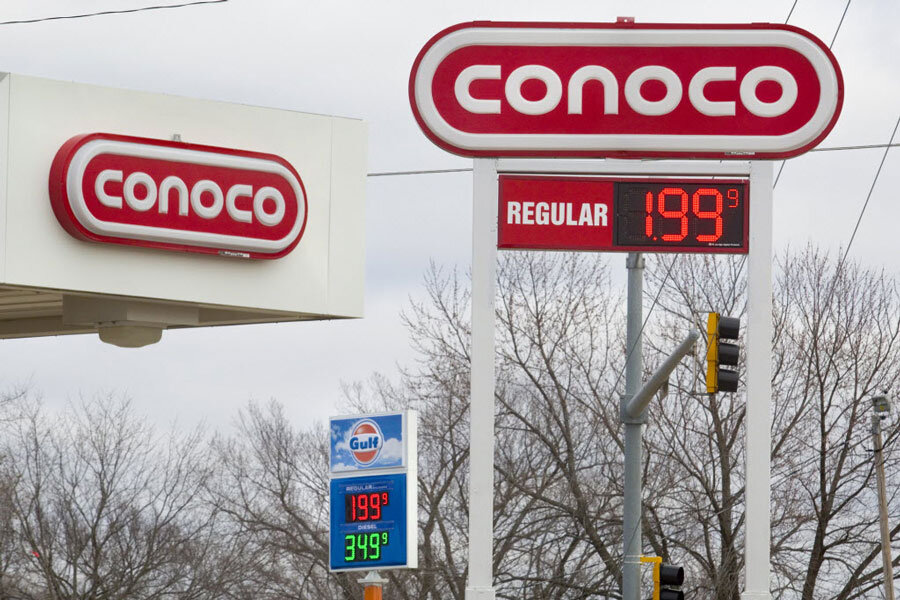What inflation? Consumer prices fall by largest amount in six years.
Loading...
| Washington
America’s main gauge of consumer prices fell in November by the largest amount in six years, driven down not just by plunging fuel costs but by price declines for clothing, used cars, and some other items.
In all, the consumer price index is still up this year, but the pace of inflation is minimal and has been decelerating during the years of economic recovery since 2011. The CPI is up just 1.3 percent over the past 12 months.
That doesn’t mean prices are now poised to fall at grocery stores or hospitals, but it does give millions of consumers a welcome boost: Wages have been rising modestly while prices are generally quiescent. This year looks set to end with the best real pay increases since 2009 – a year when prices were falling and 6 million more Americans were unemployed.
“The plunge in prices at the pump is offering relief to lower and middle income households and mitigating the elevated level of food prices,” says Chris Christopher, director of consumer economics at the forecasting firm IHS Global Insight in Lexington, Mass., in an e-mailed analysis.
In November, the month-over-month price drops included 6.6 percent in gasoline prices, 3.5 percent for fuel oil, 1.2 percent for used cars and trucks, and 1.1 percent for apparel. Despite modest rises in other sectors like food, shelter, and medical care, that pushed the overall CPI down by 0.3 percent for the month.
The changes in part reflect weakness in the global economy, as well as gushing supplies of oil as Saudi Arabia leads a price war designed to muscle higher-cost producers out of the marketplace.
Regular gas now averages $2.51 per gallon, according to the AAA Daily Fuel Gauge Report. And in some markets, pump prices have dipped below $2 per gallon.
Service-industry prices, which are driven more by domestic conditions in the US, are generally rising, but at a modest pace.
The US economy has been growing, with the job market improving notably, with hiring averaging about 240,000 new workers per month in 2014.
Many economists expect some pickup in inflation next year, as energy prices stop falling and an improving economy boosts pay and consumer demand.
Even so, the recent price trends have countered worries in some quarters that the economy faces an inflation threat due to years of Federal Reserve policies rooted in “quantitative easing” (purchasing bonds) and ultra-low interest rates.
The Fed has a twin mandate from Congress to pursue both price stability and full employment.
After the Labor Department’s inflation announcement Wednesday morning, the Fed was set to release a policy statement early in the afternoon, which is expected to keep the door open to a hike in short-term interest rates some time in 2015.
The current 1.3 percent pace of inflation compares with inflation of 3.2 percent in 2011, 2.1 percent in 2012, and 1.5 percent last year.
Forecasters see inflation coming in at 1.7 percent next year, according to a recent survey by the National Association for Business Economics.
Globally, the fall in oil prices may signal a tepid economy with little inflation pressure. But in Russia, where the collapse in oil equals a collapse in a key source of government revenue, a crisis of confidence in the ruble currency is making imports much more expensive for consumers to buy. Russians have been scrambling this week to buy imported goods.
For the US, by contrast, a strengthening dollar may restrain any rise in inflation, by making imported goods less expensive.






